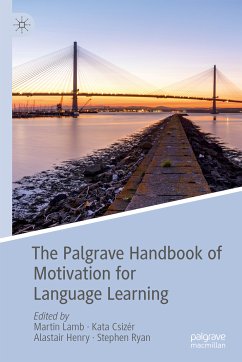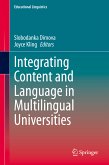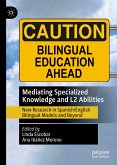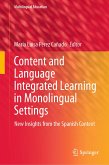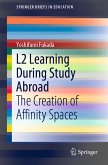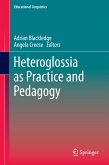This handbook offers an authoritative, one-stop reference work for the dynamic and expanding field of language learning motivation. The 32 chapters have been specially commissioned from the field's most influential researchers and writers. Together they present a compelling picture of the motivations people have for learning languages, the diverse ways we can research motivation, and the implications for promoting and sustaining learners' motivation. The first section outlines the main theoretical approaches to language learning motivation; the next section presents ways in which motivation theory has been applied in practice; the third section showcases examples of motivation research in particular contexts and with particular types of language learners; and the final section describes the exciting directions that contemporary research is taking, promising important new insights for academics and practitioners alike.
Martin Lamb is Senior Lecturer in TESOL at the University of Leeds, UK. He previously worked as a language teacher and trainer in Sweden, Indonesia, Saudi Arabia and Bulgaria. His main research interest is in language learner motivation and how it interacts with features of context like teaching in school.
Kata Csizér is Associate Professor and Chair of the Department of English and Applied Linguistics at Eötvös University, Hungary. Her main field of research interest is the social psychological aspects of L2 learning and teaching, as well as second and foreign language motivation.
Alastair Henry is Professor of Language Education at University West, Sweden. His research involves the psychology of language learning and teaching. In addition to motivation, his work has focused on teacher identities and language choices in contexts of migration.
Stephen Ryan is Professor of Applied Linguistics in the School of Culture, Media and Society at Waseda University, Japan. His research covers various aspects of psychology in language learning, and he has several co-authored books in the field.
Martin Lamb is Senior Lecturer in TESOL at the University of Leeds, UK. He previously worked as a language teacher and trainer in Sweden, Indonesia, Saudi Arabia and Bulgaria. His main research interest is in language learner motivation and how it interacts with features of context like teaching in school.
Kata Csizér is Associate Professor and Chair of the Department of English and Applied Linguistics at Eötvös University, Hungary. Her main field of research interest is the social psychological aspects of L2 learning and teaching, as well as second and foreign language motivation.
Alastair Henry is Professor of Language Education at University West, Sweden. His research involves the psychology of language learning and teaching. In addition to motivation, his work has focused on teacher identities and language choices in contexts of migration.
Stephen Ryan is Professor of Applied Linguistics in the School of Culture, Media and Society at Waseda University, Japan. His research covers various aspects of psychology in language learning, and he has several co-authored books in the field.
Dieser Download kann aus rechtlichen Gründen nur mit Rechnungsadresse in A, B, BG, CY, CZ, D, DK, EW, E, FIN, F, GR, HR, H, IRL, I, LT, L, LR, M, NL, PL, P, R, S, SLO, SK ausgeliefert werden.
"The combination of theory and practice in this volume contributes to expanding its readership. Experts as well as novice researchers of L2 motivation will benefit from this arrangement, as the former have a deep understanding of L2 motivation but can learn about new areas, and the latter can attain insight on the topic. As a comprehensive and practical conclusion of current L2 motivation research, this volume will guide researchers to further probe into L2 motivation." (Lixiang Gao & Honggang Liu, Revista Española de Lingüística Aplicada, Vol. 34 (2), 2021)
Es gelten unsere Allgemeinen Geschäftsbedingungen: www.buecher.de/agb
Impressum
www.buecher.de ist ein Internetauftritt der buecher.de internetstores GmbH
Geschäftsführung: Monica Sawhney | Roland Kölbl | Günter Hilger
Sitz der Gesellschaft: Batheyer Straße 115 - 117, 58099 Hagen
Postanschrift: Bürgermeister-Wegele-Str. 12, 86167 Augsburg
Amtsgericht Hagen HRB 13257
Steuernummer: 321/5800/1497
USt-IdNr: DE450055826
Bitte wählen Sie Ihr Anliegen aus.
Rechnungen
Retourenschein anfordern
Bestellstatus
Storno

